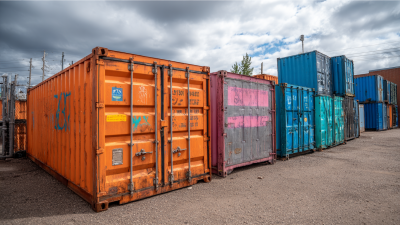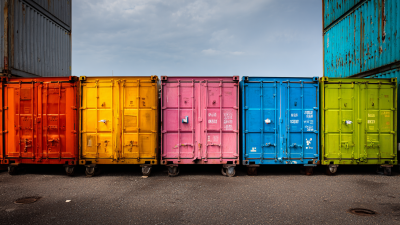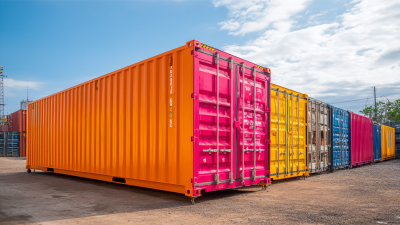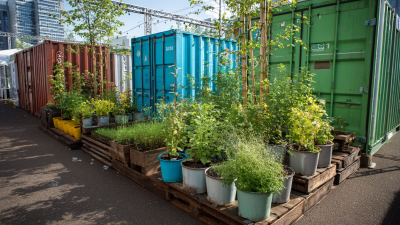The trend towards sustainability is reshaping various industries, and the market for second hand storage containers is no exception. As businesses and individuals increasingly prioritize eco-friendly practices, the demand for pre-owned storage solutions has surged. According to a report by MarketsandMarkets, the global storage container market is projected to reach USD 12.5 billion by 2025, with a significant portion attributed to the growing preference for second hand options. These containers not only offer cost savings but also contribute to reducing waste and promoting circular economy principles.
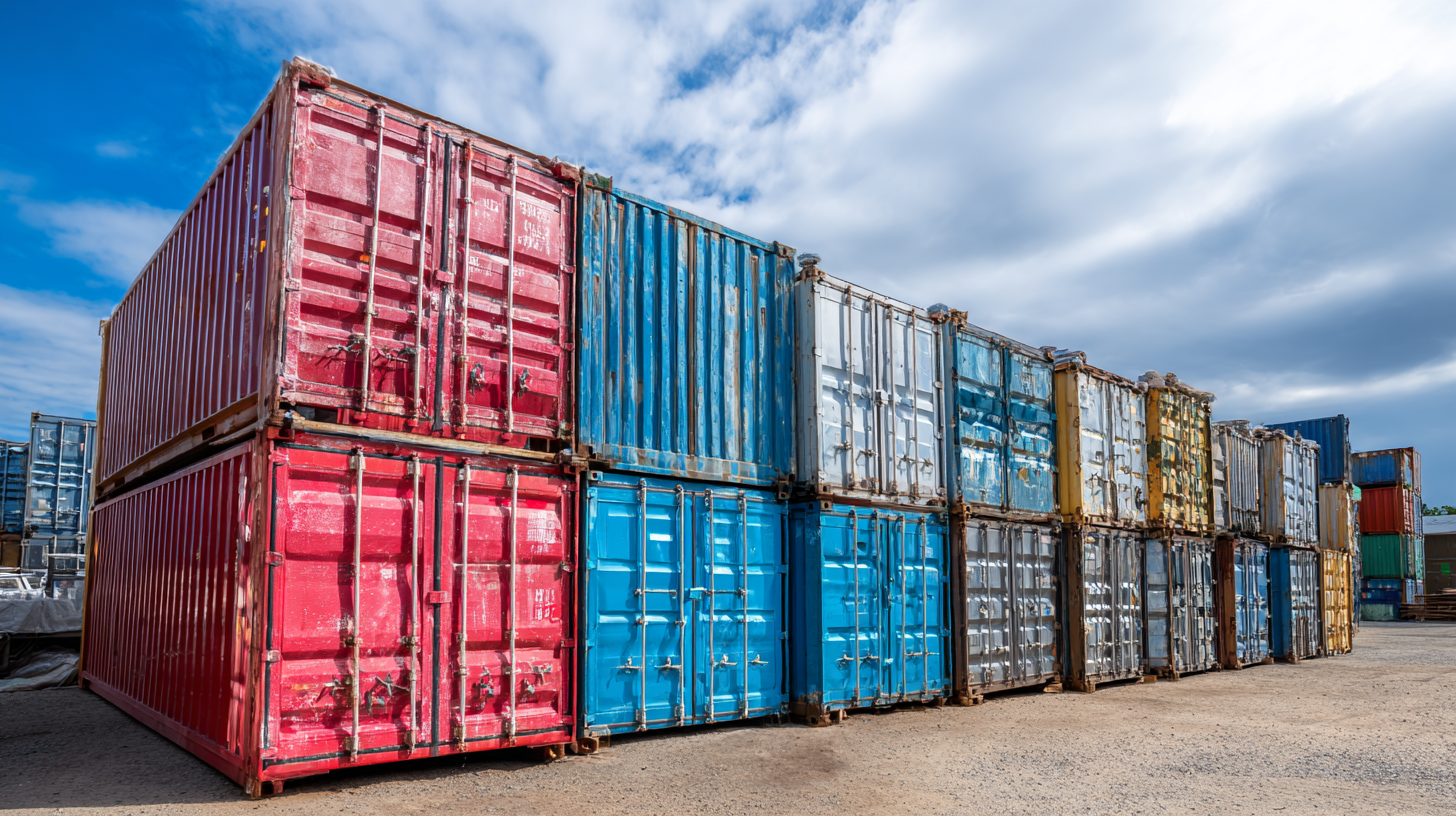
Renowned industry expert, Dr. Emily Carr, emphasizes the importance of second hand storage containers in sustainable practices. She states, "Incorporating second hand storage solutions can significantly minimize the environmental impact of logistics operations while providing substantial financial benefits." This perspective underscores the potential of second hand containers not just as a practical storage solution, but as a strategic move towards greener operations.
As we look towards 2025, understanding the top trends in second hand storage containers will be crucial for companies aiming to maximize their sustainability efforts while reaping cost savings. This article explores the top five trends poised to make a significant impact, highlighting how businesses can adapt and innovate within this rapidly evolving landscape.
As we approach 2025, the trend of utilizing
second hand storage containers is evolving, reflecting a growing commitment to
sustainability and cost efficiency. Recent reports indicate that the
second hand storage container market is projected to grow by
14% annually, driven largely by rising
environmental awareness among businesses and consumers alike. This shift
towards repurposing these containers not only reduces waste but also minimizes the carbon footprint
associated with manufacturing new storage solutions.
Emerging popular designs in second hand storage containers for 2025 highlight versatility and functionality.
Innovative modifications, such as converted containers for urban farming and mobile workspace solutions, are gaining traction.
Additionally, companies are increasingly opting for customized branding options on upcycled containers, a trend highlighted in a
recent survey by the Global Container Institute, which noted that
68% of businesses view eco-friendly branding as a key marketing strategy.
This combination of sustainability and aesthetic appeal signifies a significant change in how
second hand storage containers are perceived and utilized in various industries.
As the demand for second-hand storage containers continues to rise, innovative materials are playing a crucial role in enhancing sustainability. These materials not only reduce environmental impact but also improve the durability and functionality of storage solutions. Think recycled steel or repurposed wood, which not only minimize waste but also provide aesthetically pleasing options for various storage needs. By choosing containers made from sustainable materials, businesses can not only contribute to environmental conservation but also save money in the long run.

Tips for Selecting Sustainable Storage Containers:
By focusing on innovative materials, businesses and individuals can effectively contribute to a more sustainable future while enjoying the benefits of practicality and savings.
As the demand for sustainable practices continues to grow, sourcing quality second-hand storage containers has become an effective strategy for businesses seeking to maximize both savings and environmental responsibility. One cost-effective approach involves partnering with local suppliers or online marketplaces specializing in pre-owned containers. This not only helps reduce transportation costs but also fosters community relationships and supports local economies. By identifying trustworthy sources, businesses can ensure they are acquiring quality containers that meet their storage needs without compromising their budget.
Another strategy is to leverage social media and community platforms to find second-hand options. Many individuals and businesses frequently post listings for used containers, often at significantly lower prices than new ones. Additionally, participating in industry-specific forums can yield valuable insights and direct access to sellers looking to offload excess inventory. Moreover, businesses should consider timing their purchases strategically, as containers are often available at discounted rates during off-peak seasons or during facility upgrades. These practices not only enable significant cost savings but also contribute to a cycle of reuse that champions sustainability.
| Trend | Description | Sustainability Impact | Cost Savings |
|---|---|---|---|
| Upcycled Materials | Containers converted from other uses, extending lifespan and utility. | Reduces waste and promotes circular economy practices. | Lower material costs compared to new production. |
| Local Sourcing | Procurement of containers from nearby suppliers to minimize transportation emissions. | Less carbon footprint from reduced shipping distances. | Saves on shipping costs. |
| Modular Design | Containers that can be easily expanded or adapted to different needs. | Promotes longevity and flexibility in use. | Reduces the need for purchasing additional units. |
| Digital Marketplaces | Online platforms dedicated to buying and selling second hand containers. | Encourages reuse over new purchases. | Often lower prices than traditional sellers. |
| Eco-friendly Coatings | Use of non-toxic paints and finishes to extend container life and reduce environmental impact. | Minimizes hazardous waste and health risks. | Decreases future treatment and maintenance costs. |
The second-hand container market is embracing eco-friendly practices that align with the growing demand for sustainable solutions. Utilizing pre-owned storage containers not only minimizes waste but also significantly reduces the environmental impact associated with manufacturing new containers. This trend reflects a broader movement towards sustainability, paralleling initiatives like reducing disposable products and adopting sustainable packaging, which are integral to mitigating environmental harm.
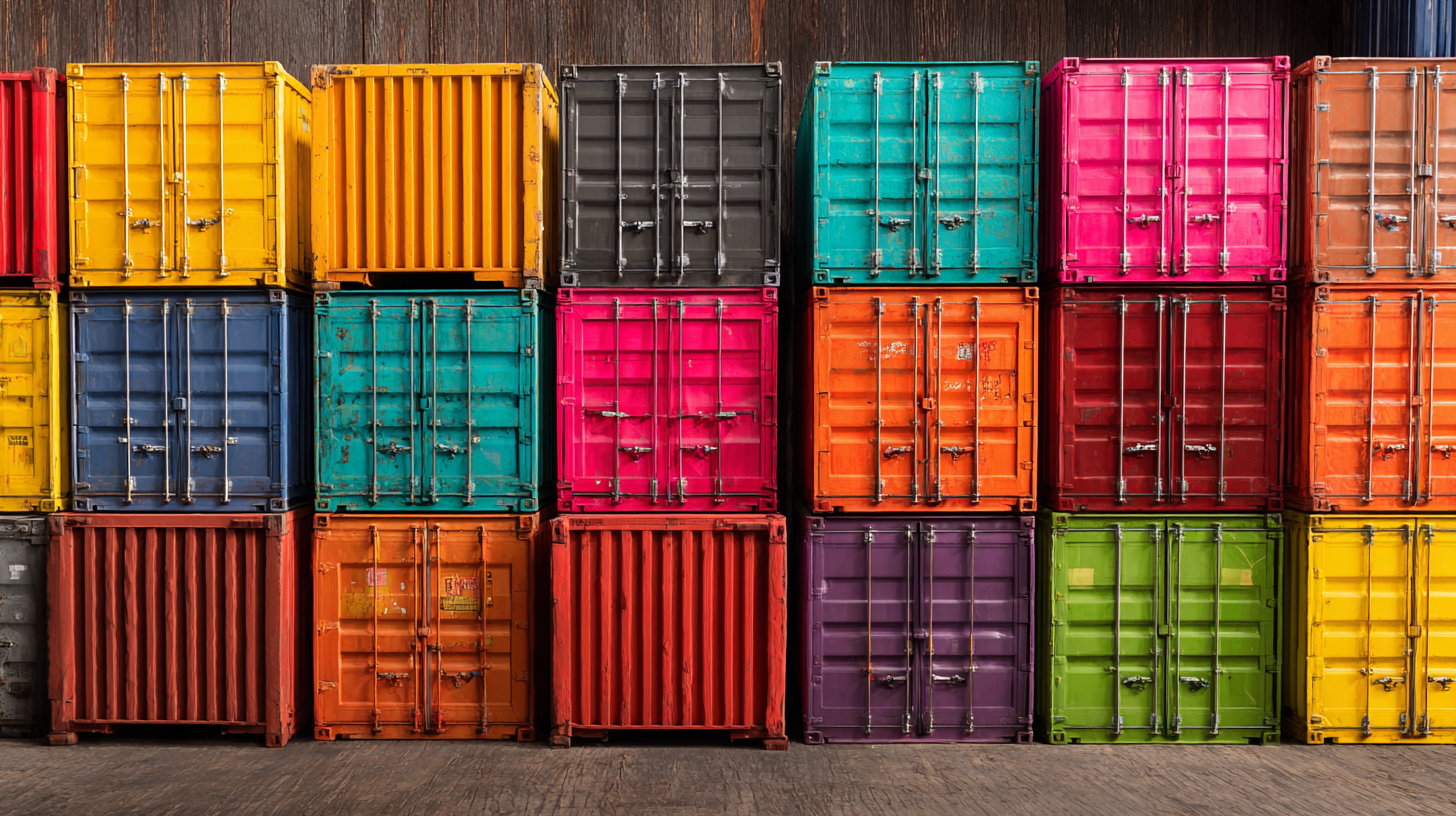
Incorporating sustainability in the second-hand container market also addresses consumer awareness and responsibility. As individuals and businesses aim to lower their carbon footprints, opting for second-hand containers provides a viable path forward. This decision not only contributes to the circular economy but also helps alleviate the excessive waste associated with single-use plastics and fast fashion. By promoting eco-friendly practices, the second-hand container sector is not just enhancing its market appeal but is also setting a precedent for other industries to follow suit in seeking greener alternatives.
The advancement of technology plays a pivotal role in enhancing the efficiency of second-hand storage containers. The integration of smart-port technologies and the Internet of Things (IoT) allows for real-time data collection and monitoring, significantly improving operational efficiency. For instance, with smart containers equipped with sensors, operators can track container conditions and locations, leading to better management of logistics. This proactive approach ensures that containers are utilized optimally, reducing waste and promoting sustainability.
**Tips:**
- Invest in IoT-enabled containers to gain insights into container performance and maintenance needs.
- Implement digital tracking systems to streamline retrieval processes and minimize delays.
Moreover, the use of biometric data for container pickups marks a significant leap in security and efficiency. This innovation not only safeguards assets but also expedites the logistics process, enabling faster turnarounds. As containers become smarter, they contribute to a more sustainable supply chain by minimizing environmental impact through better resource management.
**Tips:**
- Explore biometric and ID-based technologies for improved security in container logistics.
- Monitor environmental performance metrics to identify areas for improvement and efficiency gains.
This chart illustrates the projected growth in demand for second hand storage containers across various sectors in 2025, highlighting the influence of technology on sustainability and cost savings.
